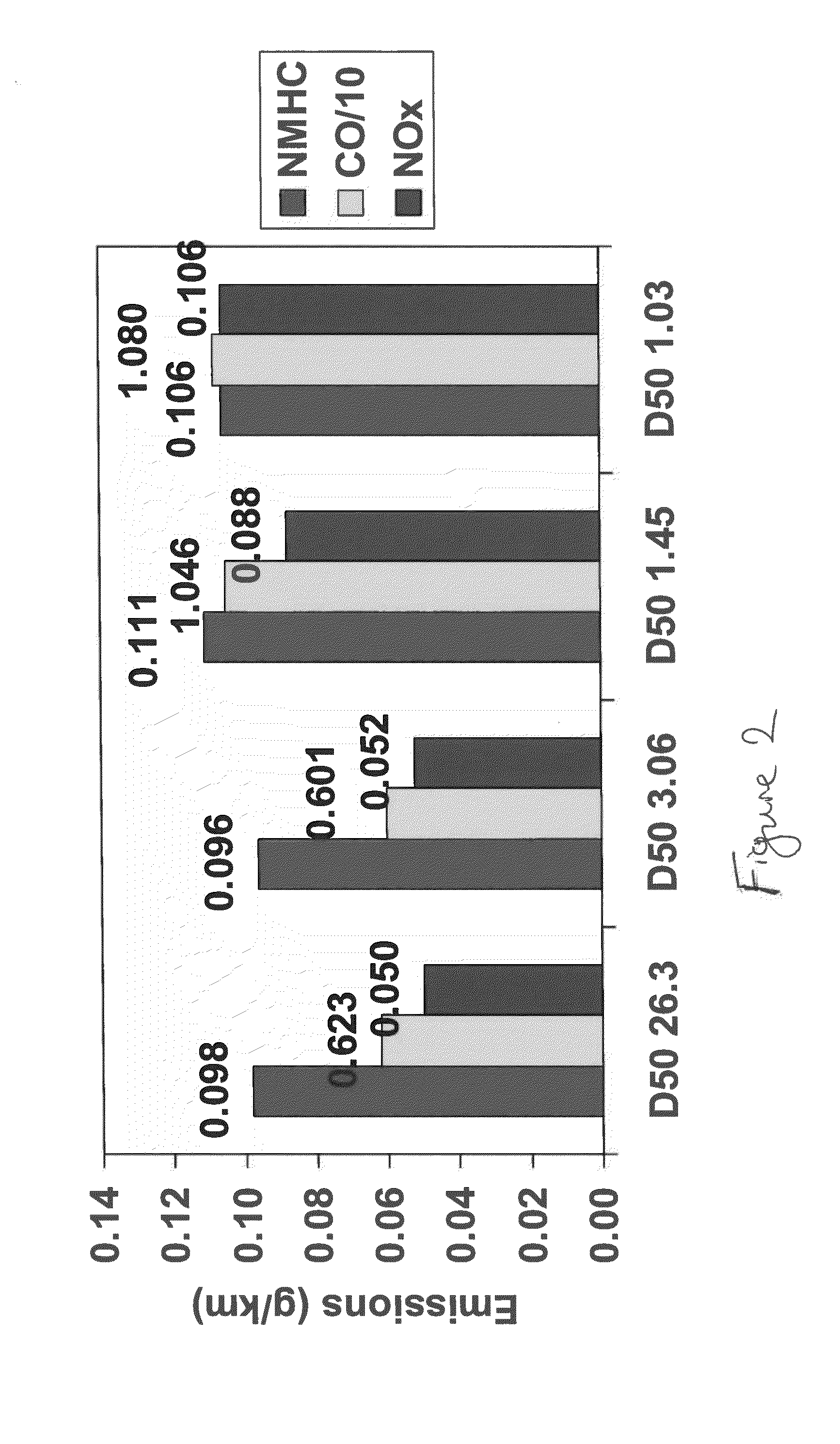Positive Ignition Engine and Exhaust System Comprising Three-Way Catalysed Filter
a technology of catalytic filter and positive ignition engine, which is applied in the field of filters, can solve the problems of reducing the ability of twc to oxidise co and hc, affecting the efficiency of the engine, and requiring excessive oxygen consumption,
- Summary
- Abstract
- Description
- Claims
- Application Information
AI Technical Summary
Benefits of technology
Problems solved by technology
Method used
Image
Examples
example 1
[0075]Four three-way catalyst washcoats were prepared, each comprising particulate alumina having a D50 of >1 μm, a particulate ceria-zirconia mixed oxide including a rare earth dopant as an oxygen storage component and available from a commercial source and salts of palladium and rhodium. Each washcoat was coated on a flow through honeycomb substrate of dimensions 132×101.6 mm, 400 cells per square inch (62 cells cm−2) and wall thickness 6 thousandths of an inch (0.15 mm) using techniques described in WO 99 / 47260. The quantity of palladium salts and of rhodium salts included was such that the loading of palladium in the final product was 7 g / ft3 (0.25 g / l) and the loading of rhodium was 2 g / ft3 (0.07 g / l).
[0076]The difference between each three-way catalyst washcoat was that the particulate ceria-zirconia mixed oxide was “as received” in the first three-way catalyst washcoat, but in the second, third and fourth washcoats the particulate ceria-zirconia was milled to different grades...
example 2
[0078]Two three-way catalyst (TWC) coatings were prepared at a washcoat loading of 1.6 g / in−3 and a precious metal loading of 30 g / ft3 (1.06 g / l) (Pt:Pd:Rh 0:9:1); a first comprised particulate alumina and a ceria-zirconia mixed oxide both milled to a d90−2) cordierite wallflow filter substrates having 12 thousandths of an inch (0.3 mm) wall thickness (“300 / 12”) with a nominal average pore size of 20 micrometers (hereinafter “microns”) (62% porosity). The catalyst composition was applied as a washcoat to the substrate then dried and calcined in the usual way. The post-calcined catalysed filter is referred to as a “fresh” sample. Each filter was installed in a close-coupled position on a stoichiometrically operated Euro 5 passenger car with a 2.0 L turbo charged direct injection gasoline engine. The fresh samples were evaluated over a minimum of three MVEG-B drive cycles. The backpressure differential was determined between sensors mounted upstream and downstream of the filter.
[0079]...
PUM
| Property | Measurement | Unit |
|---|---|---|
| median particle size | aaaaa | aaaaa |
| pore size | aaaaa | aaaaa |
| porosity | aaaaa | aaaaa |
Abstract
Description
Claims
Application Information
 Login to View More
Login to View More - R&D
- Intellectual Property
- Life Sciences
- Materials
- Tech Scout
- Unparalleled Data Quality
- Higher Quality Content
- 60% Fewer Hallucinations
Browse by: Latest US Patents, China's latest patents, Technical Efficacy Thesaurus, Application Domain, Technology Topic, Popular Technical Reports.
© 2025 PatSnap. All rights reserved.Legal|Privacy policy|Modern Slavery Act Transparency Statement|Sitemap|About US| Contact US: help@patsnap.com



